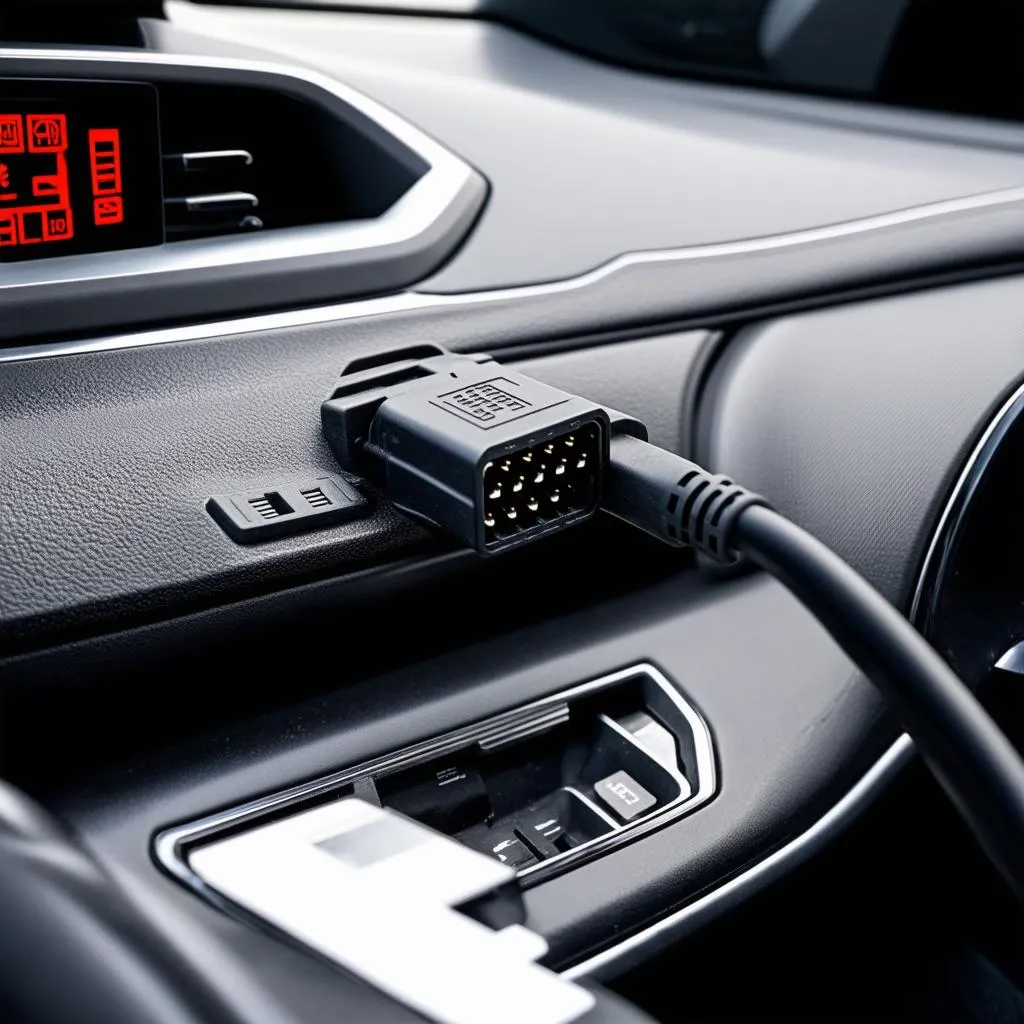Disabling your car alarm with VCDS (Vag-Com Diagnostic System) can be a necessary procedure for various reasons, from troubleshooting a faulty alarm to performing specific maintenance tasks. This guide will walk you through the process, offering valuable insights and addressing common concerns.
Understanding the Need for VCDS Alarm Disable
Sometimes, a car alarm can malfunction, triggering unexpectedly and causing disruption. In such situations, a temporary VCDS alarm disable can be helpful for diagnostics. Other times, specific maintenance procedures, like working on the electrical system, might require disabling the alarm to avoid accidental triggers. Knowing how to use VCDS for this purpose can save you time and frustration.
After the opening paragraph, we will delve into a more detailed explanation of how VCDS interacts with your vehicle’s control modules. This diagnostic tool allows access to a wide range of settings, including those controlling the alarm system. Similar to vcds mini cooper, using VCDS for alarm control offers a precise and effective method compared to generic OBD-II scanners. It’s important to proceed cautiously, as incorrect coding can lead to unintended consequences.
How to Disable Your Car Alarm with VCDS
Before you begin, ensure you have a genuine Ross-Tech VCDS interface and the correct software version installed on your computer. Connecting to the wrong module or using outdated software can lead to errors. The procedure involves accessing the correct control module for your specific vehicle model and adjusting the coding accordingly.
Locating the Correct Control Module
Different car models have varying control module assignments for the alarm system. Consulting your vehicle’s specific wiring diagram or using the VCDS module finder function can help identify the correct module. This step is crucial for successful alarm disabling. Improper module selection could lead to modification of unintended systems.
Modifying the Coding
Once you’ve identified the correct module, access its coding using VCDS. Within the coding string, locate the bits responsible for alarm activation. Typically, changing a specific bit from 1 to 0 will disable the alarm. Always note the original coding before making any changes. This allows you to revert to the original settings if necessary.
It’s worth noting that some vehicles might require a different procedure, involving adaptation channels rather than direct coding modifications. Referring to your vehicle’s specific instructions within the VCDS software is crucial. Much like vcds tpms disable, the specific coding process can vary significantly between vehicle models. Always ensure you are following the correct instructions for your specific car.
Troubleshooting Common VCDS Alarm Disable Issues
Sometimes, the alarm might not disable despite following the correct procedure. This could be due to various factors, such as a faulty alarm siren, wiring problems, or incorrect coding. Double-checking the coding and verifying the connection with the control module are essential troubleshooting steps.
Checking for Fault Codes
After attempting to disable the alarm, scan for fault codes within the relevant control module. These codes can provide valuable clues about any underlying issues preventing the alarm from disabling. Analyzing these codes can help pinpoint the source of the problem.
As you’re working with your car’s electronic systems, understanding the underlying coding principles can be beneficial. Resources like vcds coding helper can provide further insights into VCDS coding and adaptation procedures. Utilizing these resources can enhance your understanding of how to use VCDS effectively.
Verifying Wiring and Connections
Inspect the wiring connected to the alarm siren and control module for any damage or loose connections. A compromised wiring harness can prevent the VCDS commands from reaching the alarm system effectively. Just as with vcds trunk coding, ensuring the wiring integrity is essential for proper communication between the control module and the related components.
Safety Precautions
Working with car electronics requires caution. Always disconnect the battery’s negative terminal before making any connections with VCDS. This prevents accidental short circuits. Also, ensure you’re using a genuine Ross-Tech VCDS interface, as counterfeit tools can damage your vehicle’s electronics. Expert John Smith, Automotive Electrical Engineer, emphasizes, “Using genuine tools is paramount. Counterfeit interfaces can introduce unpredictable voltages and damage sensitive control modules.”
Understanding the specific functions and capabilities of your VCDS interface is crucial. For instance, the vcds hex-v2 review offers valuable insights into a specific model, which can help you choose the right tool for your needs. Selecting the appropriate interface ensures compatibility and functionality.
Conclusion
Disabling a car alarm using VCDS can be a valuable skill for diagnostics and maintenance. By following the correct procedure and taking necessary precautions, you can successfully disable the alarm without causing any harm to your vehicle’s systems. Remember to always double-check the coding and verify connections before concluding the procedure. If you encounter persistent issues, consult a qualified automotive electrician.
FAQ
- Can I permanently disable my car alarm with VCDS?
Yes, although it is generally recommended to only disable it temporarily for troubleshooting or maintenance. - Will disabling the alarm affect other car functions?
Generally, no, but improper coding could affect other systems linked to the same control module. - What if I can’t find the correct control module?
Consult your vehicle’s wiring diagram or use the VCDS module finder function. - Is it safe to disable the alarm myself?
Yes, if you follow the correct procedure and precautions. - What should I do if the alarm still goes off after disabling it with VCDS?
Check the wiring, scan for fault codes, and consult a qualified electrician if necessary. - What are some common reasons for disabling a car alarm with VCDS?
Troubleshooting malfunctions, performing maintenance on electrical systems, or temporarily silencing a faulty alarm. - Is it legal to disable a car alarm?
Laws regarding car alarm disabling vary by location; check your local regulations.
Common Scenarios for VCDS Alarm Disable Questions
- Scenario 1: The alarm keeps going off randomly. Using VCDS to temporarily disable the alarm allows you to pinpoint the cause without constant interruptions.
- Scenario 2: You need to work on the car’s electrical system near the alarm components. Disabling the alarm prevents accidental triggering during maintenance.
- Scenario 3: You suspect a faulty alarm siren. Disabling the alarm with VCDS and checking for fault codes can help confirm the diagnosis.
Further Reading and Related Articles
You might also find articles on VCDS immobilizer coding and control module adaptation helpful.
Need further assistance? Contact us via Whatsapp: +1 (641) 206-8880, Email: [email protected] or visit us at 276 Reock St, City of Orange, NJ 07050, United States. We offer 24/7 customer support.



